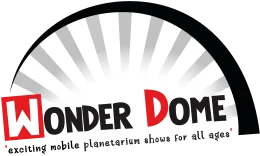The Very Large Array
I recently went to the USA and visited several astronomy sites.
In coming months, my blogs will include some of the visits.
The first is the Very Large Array in New Mexico, the VLA.
As the name implies, the VLA is a huge radio observatory.
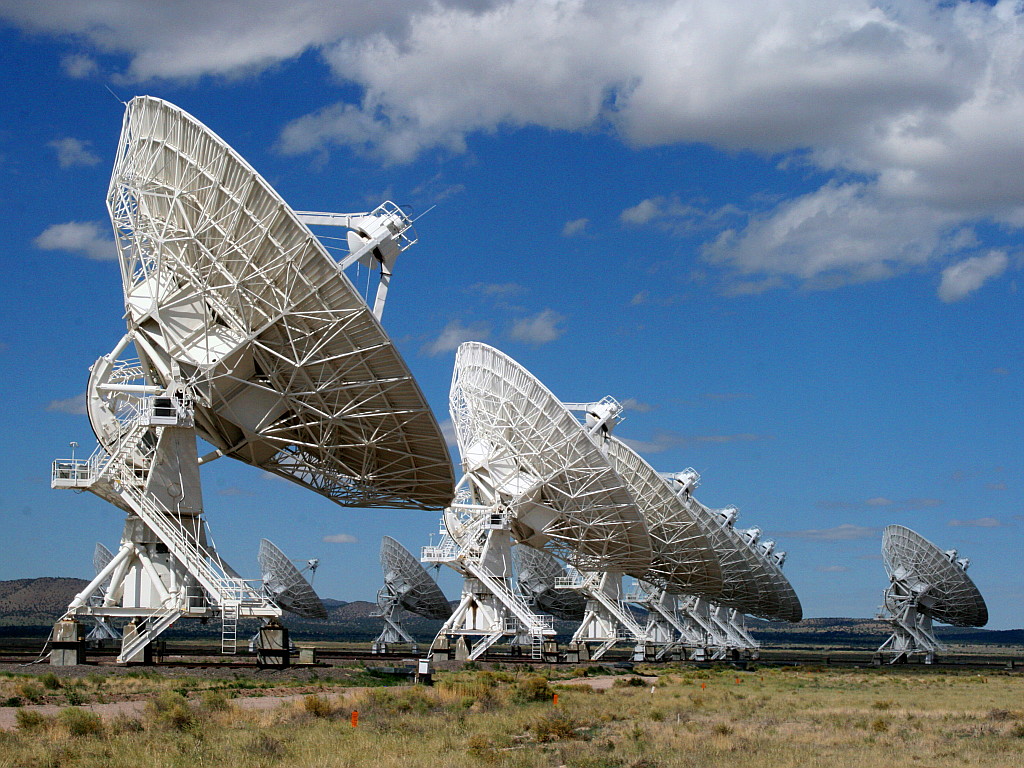
VLA in NewMexico: NROA
VLA dishes
The most striking impression of the VLA is the number of radio telescopes that make up the array.
There are 28 huge dishes, each one 25 metres across and weighing 230 tons.
Each dish is an impressive radio telescope in its own right.

VLA dish. Photo: Dennis Ashton
Combined, the 28 dishes make the VLA one of the most powerful radio observatories in the world.
In practice, 27 dishes are in use at any one time.
One dish remains out on a rolling maintenance programme
The Array
The 27 radio dishes are mounted on railway tracks arranged in the shape of a letter Y.
Each arm of the Y is 21 km (13 miles) long.
The individual dishes spread out along the tracks.
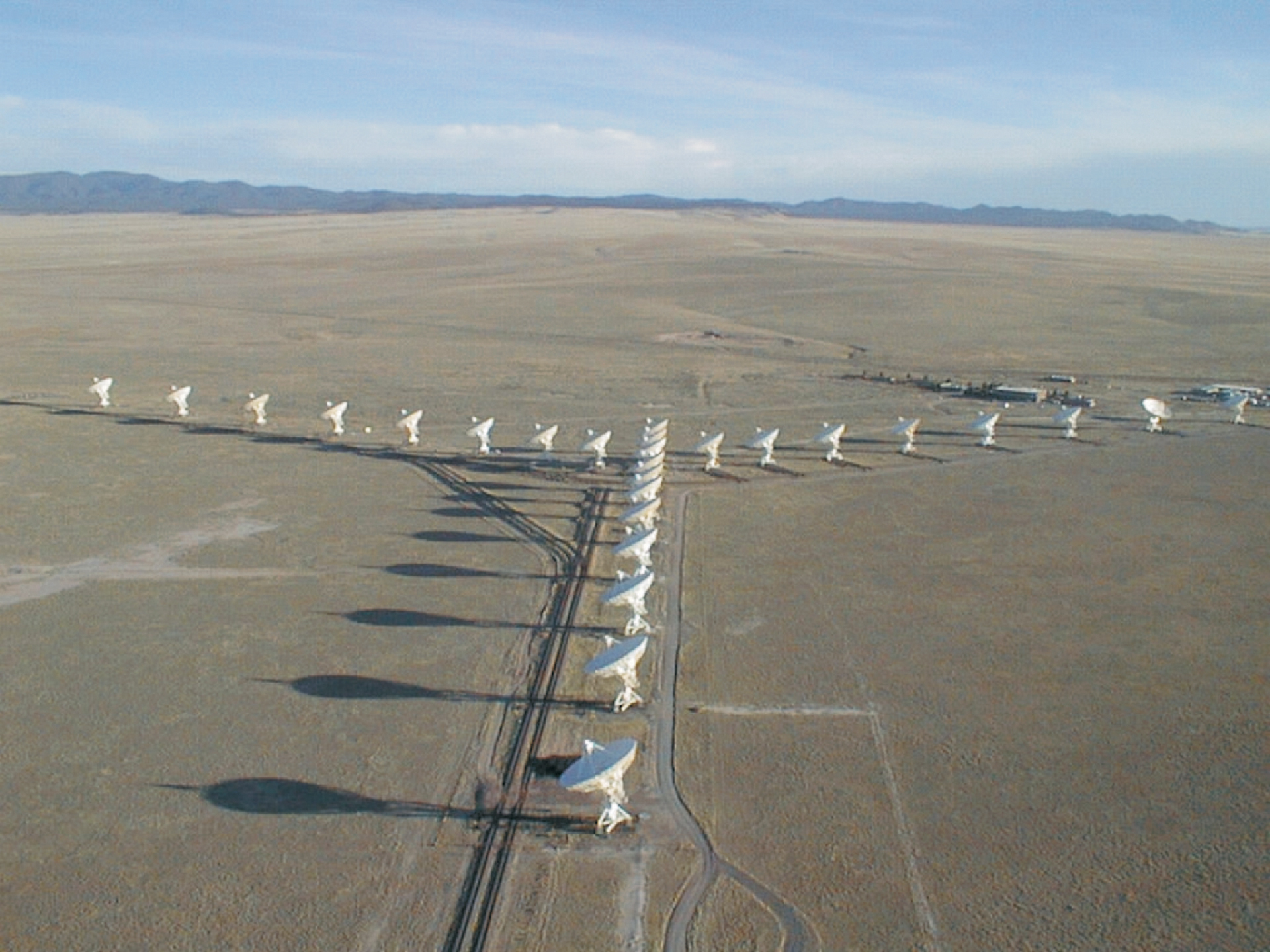
VLA close array: Credit: NRAO/AUI/NSF
They are all tuned in the same way and a super-computer combines their signals.
The signal combination is known as Aperture Synthesis.
So the array effectively becomes a single huge dish several kilometres across.
Radio waves are long, so a big receiver is needed to give high resolution images.
History
The VLA is situated in the high desert of New Mexico at an altitude of 2,120 metres, almost 7,000 feet.
It is remote from centres of population and their radio interference.
The Array is part of the USA’s National Radio Astronomy Observatory, NRAO.

Construction of the VLA began in 1974 and was completed by 1980.
The cost was 78 million dollars, about 290 million in today’s prices.
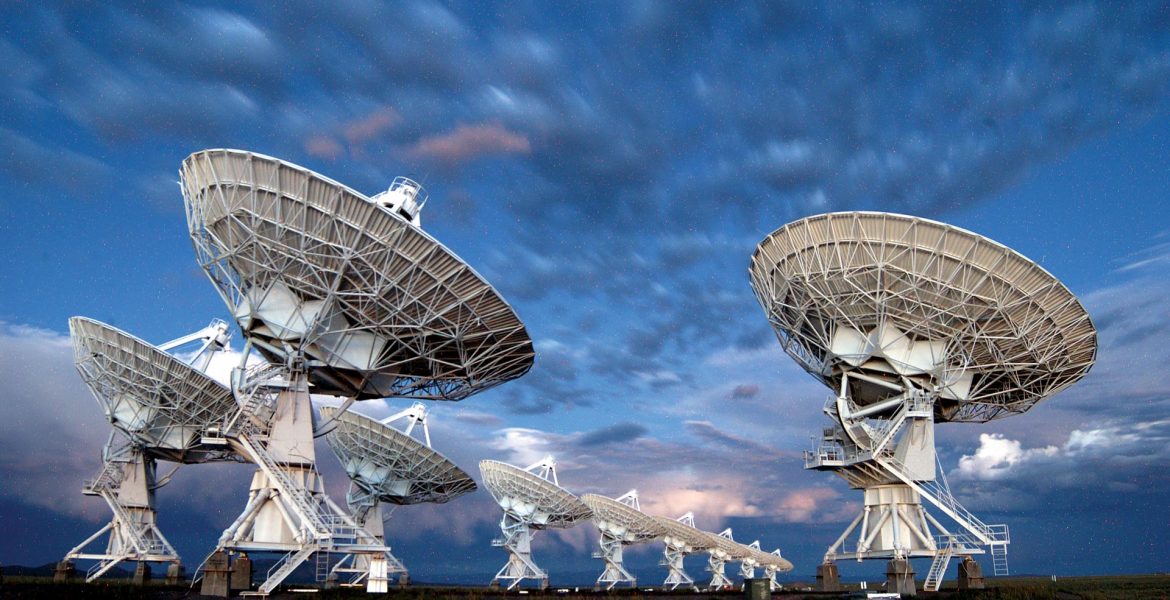
VLA: Credit NROA
The observatory has seen upgrades in technology over the years.
The last major upgrade was completed in 2012
Then VLA was renamed the Karl G. Jansky VLA in honor of the pioneering radio astronomer of the 1930s.
Astronomy at the VLA
The VLA is a versatile observatory.
It scans radio waves from our own Milky Way galaxy to objects near the edge of the universe.
Among these are powerful sources like pulsars, quasars, radio galaxies and supernovae.

Currently it is involved in a survey of the entire radio sky in its view.
The survey is expected to reveal millions of new radio objects in the universe.
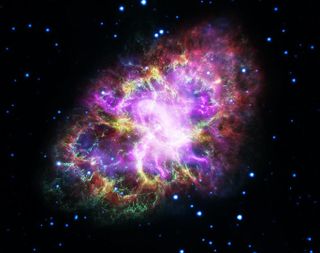
The Crab Nebula: NASA/JPL
The VLA contributed to this image of the Crab Nebula, a supernova remnant.
Other telescopes involved, like the Hubble Space Telescope, added imagery at different wavelengths.
Moving the Dishes
A powerful transporter moves the dishes along the rails.
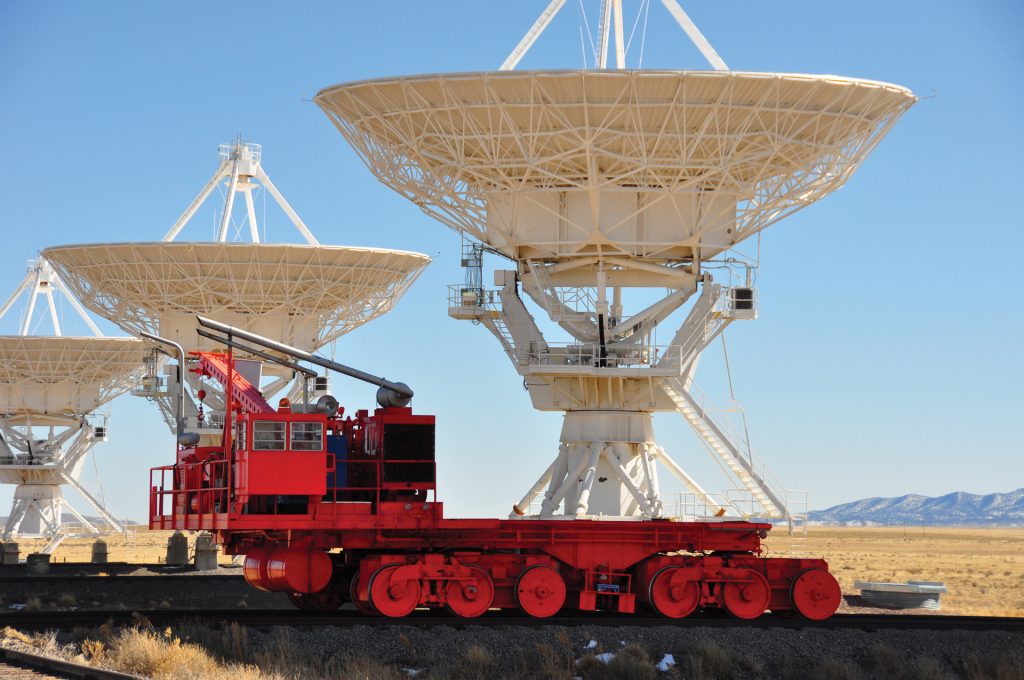
Dish transporter: NROA
Click here to see a dish being moved into the ‘barn’, the maintenance building.
Array and Resolution
The four images demonstrate how images become clearer as the size of the array increases.
Image A was produced by the dishes at their greatest spread, at over 22 miles.
As the dishes move closer together, B and C, the clarity decreases.
Configuration D is where the dishes are close together, in an area less than a mile wide.
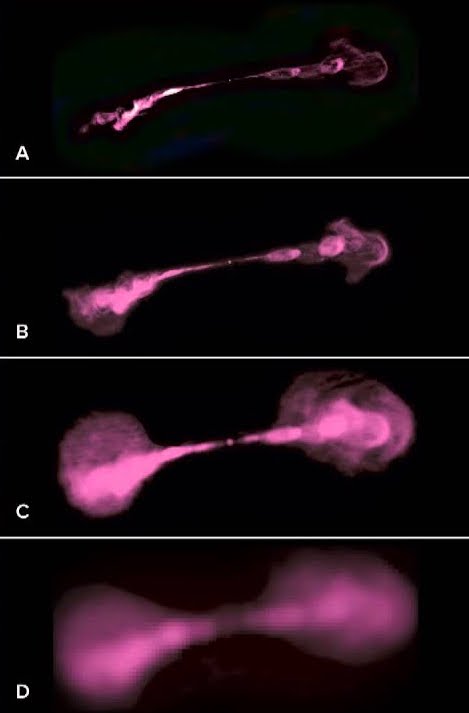
Hercules A radio source seen from each configuration of the VLA.
Credit: NRAO/AUI/NSF
The close configuration D is still very useful.
It is the most sensitive arrangement able to detect very weak radio signals.
The future at VLA
A new upgrade could see the VLA grow even further.
There are plans for 244 new dishes, each 18 metres wide.
They would spread out over a massive 8,860 km (5,500 miles) in the desert.
The resolving power of this Next-Generation VLA would be revolutionary.
It would also be an amazing sight!
My Visit
We approached the VLA along highway 50 from the town of Magdalena.
The road runs dead straight for miles through the desert.
Then the white dishes come into view.

VLA from highway 50. Photo: Dennis Ashton
After entering the facility, it’s a drive of several miles to the visitor centre.
Exhibits in the centre trace the history and science of VLA.
A 23-minute video, narrated by Jodie Foster, gives an overview of radio astronomy and the array.
You can enjoy this excellent film on Youtube. Just click here.
At the visitor centre you can join a guided tour or follow a marked route around the site.
We chose the self-guided tour and set off to the dishes.
The route takes you to a giant sundial.
A metal stone gnomon casts a shadow across a paved square.
Huge stone blocks topped with silver spheres mark the time.

The Bracewell Radio Sundial. Photo: Dicklyon
Further on, small ‘whisper dishes’ show how the parabolic shape focuses waves.
A whisper in one produces a clear sound in another several metres away.

A radio antenna with the sundial in the background. Photo: Dennis Ashton
Then we strolled on to see a dish in close up.
Each radio telescope is an impressive structure.

Dennis and dish

View across the desert

Rails crossing highway 50
Photos: Dennis Ashton & Jane Walker
After the nearby dishes, the tour route goes on to the balcony of the control building.
There is a panoramic view of the VLA across the desert floor.
The half-mile walk returns to the visitor centre.
On our visit the gift shop was closed, the only down side of our stay.
Contact
The VLA has formed the background for several movies.
The most notable was the 1996 movie ‘Contact’ starring Jodie Foster.
Jodie Foster in the movie ‘Contact’
In this publicity photo, Jodie Foster’s character is receiving an alien signal.
The film makers wanted the dishes brought close together to make the most impressive background.
That wasn’t possible, so they used CGI instead.
You can follow the making of the movie here.
As ever with movie-making, it wasn’t always a smooth ride.
The best quote comes from director Robet Zemeckis.
He asked an astronomer at VLA how much the observatory had cost.
‘About $200 million in today’s money’ was the answer.
‘Hell, for that money you could make a movie’ said Zemeckis with a broad grin.
It’s an entertaining read!
The VLA from home!
You can visit the VLA from home via their webcam.
Click here to see live pictures from New Mexico.
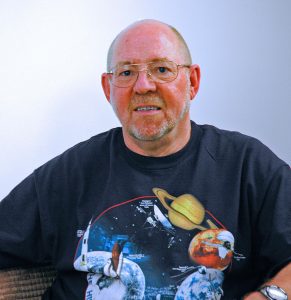
The author: Dennis Ashton is a Fellow of the Royal Astronomical Society and a Wonderdome presenter.
Would you like to hear more Astronomy news?
Do you want to to find out about our upcoming public events?
Follow WonderDome Portable Planetarium on Twitter and Facebook or go to our web site wonderdome.co.uk
